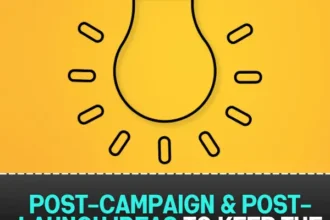Let’s be honest—“going viral” sounds like magic.
But when you peek under the hood of companies like Dropbox, Uber, or Clubhouse, you’ll see something more strategic at play:
👉 Viral Loops.
They’re not buzzwords. They’re growth engines. And if you understand how they work, you can build one too—whether you’re launching an app, growing a newsletter, or building your brand.
Let’s break it down in plain English (with some startup sauce, of course).
What is a Viral Loop?
A Viral Loop is a self-repeating cycle that turns users into marketers.
Every new user brings in more users. It’s organic growth on autopilot.
Here’s the basic formula:
1️⃣ User signs up →
2️⃣ User shares/invites others →
3️⃣ New users sign up →
4️⃣ Loop repeats.
The goal? Turn every user into a recruiter, naturally.

Real-Life Examples of Viral Loops That Scaled Fast
🚀 1. Dropbox – Refer a Friend, Get More Storage
The GOAT of viral loops.
- Problem: Dropbox needed users but had a tight marketing budget.
- Solution: Offer 500MB free for every friend you refer.
- Result: User base grew from 100K to 4M+ in just 15 months.
📈 Why it worked:
- Win-win reward: Both referrer and referee benefit.
- Low friction: A simple email invite, no hoops.
🛵 2. Uber – Give $10, Get $10
Uber knew their best asset wasn’t ads—it was happy riders.
- They gave every user a unique referral code.
- When a friend signed up using your code, both of you got free ride credit.
🎯 Growth hack alert: This wasn’t just smart—it was built into the product. You opened the app? The invite button was right there.
📱 3. Clubhouse – Invite Only (Scarcity Loop)
Clubhouse played it differently—they made you work for an invite.
- Each user only got a couple of invites.
- People were begging to get in on Twitter and Reddit.
- It felt elite. Exclusive. Urgent.
🤯 Scarcity is a loop. When people get access, they invite others to prove they’re “in.” And that drives demand even higher.
🔍 The Anatomy of a Viral Loop (Simplified)
You don’t need to reinvent the wheel. Most viral loops have these four ingredients:
| Stage | What It Means |
|---|---|
| 1. Trigger | What gets a user to share? (e.g., reward, status, FOMO) |
| 2. Action | How do they invite others? (referral link, share button) |
| 3. Conversion | Do the new people sign up easily? No friction. |
| 4. Reward | Is there a compelling reason to repeat the loop? |
🧪 Industry Jargon You Should Know
Let’s decode some startup lingo while we’re here:
- K-Factor: A metric that shows how viral your product is. If every user brings in more than 1 new user, you’ve got a loop.
- Viral Coefficient: Same as K-Factor. If it’s >1, your growth is exponential.
- Time to Loop: How fast a user brings in another user. The shorter, the better.
- Friction: Anything that makes sharing harder. Fewer clicks = better loops.
🛠 How to Build Your Own Viral Loop (Even Without a Big Team)
You don’t need to be Uber or Dropbox to create a loop. Here’s a simple plan:
- Pick a hook: What’s the reward for inviting others?
- Extra content?
- Discounts?
- Social currency?
- Make it dead simple to share
- Referral links
- Auto-filled text messages
- Pre-written social posts
- Make the reward visible
- Progress bars (e.g., “2 more invites to unlock XYZ!”)
- Leaderboards
- Share milestones
- Track and tweak
- Use tools like PostHog, Mixpanel, or Firebase.
- Test different messages, reward types, and invite formats.
📊 Viral Loop vs. Just “Sharing”
Viral Loop ≠ a share button at the bottom of your blog.
| Just Sharing | Real Viral Loop |
|---|---|
| Passive (“Please share!”) | Active incentive to share |
| No follow-up | Built-in feedback & rewards |
| Unpredictable | Predictable + trackable |
If your product doesn’t make people want to invite others, it’s not a loop—it’s a leak.
🧲 Final Thoughts: Virality Is Designed, Not Discovered
You don’t need to rely on hope or hashtags. If you build a loop into your product, post, or campaign, you plant the seed for compound growth.
It won’t always happen overnight—but the smartest brands grow because they engineer sharing into everything.
Start small. Test fast. Tweak until it clicks.
And hey—if this helped you understand viral loops better, maybe share it with a friend? 😉
(See what I did there? Loop in action.)






